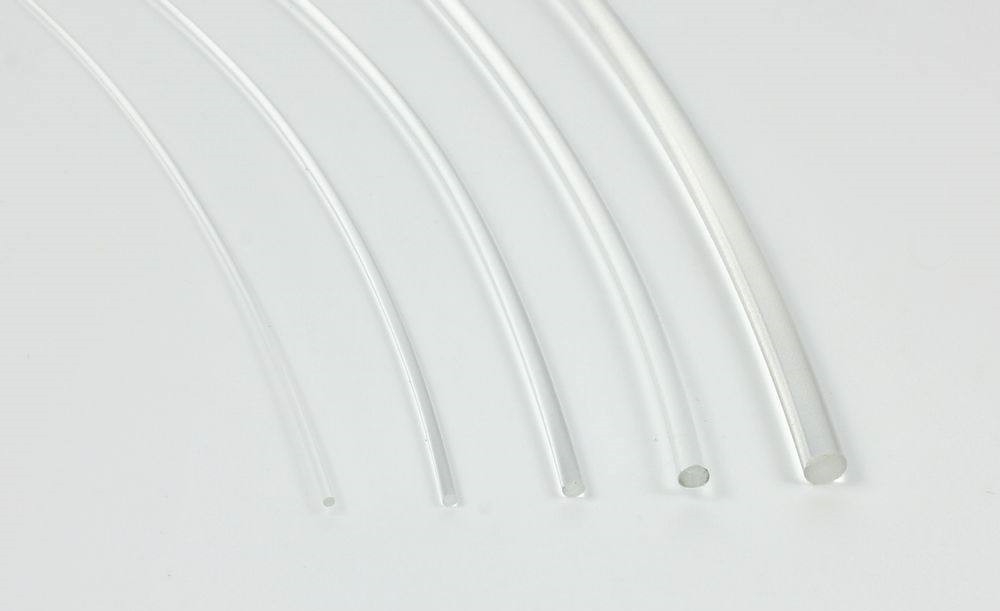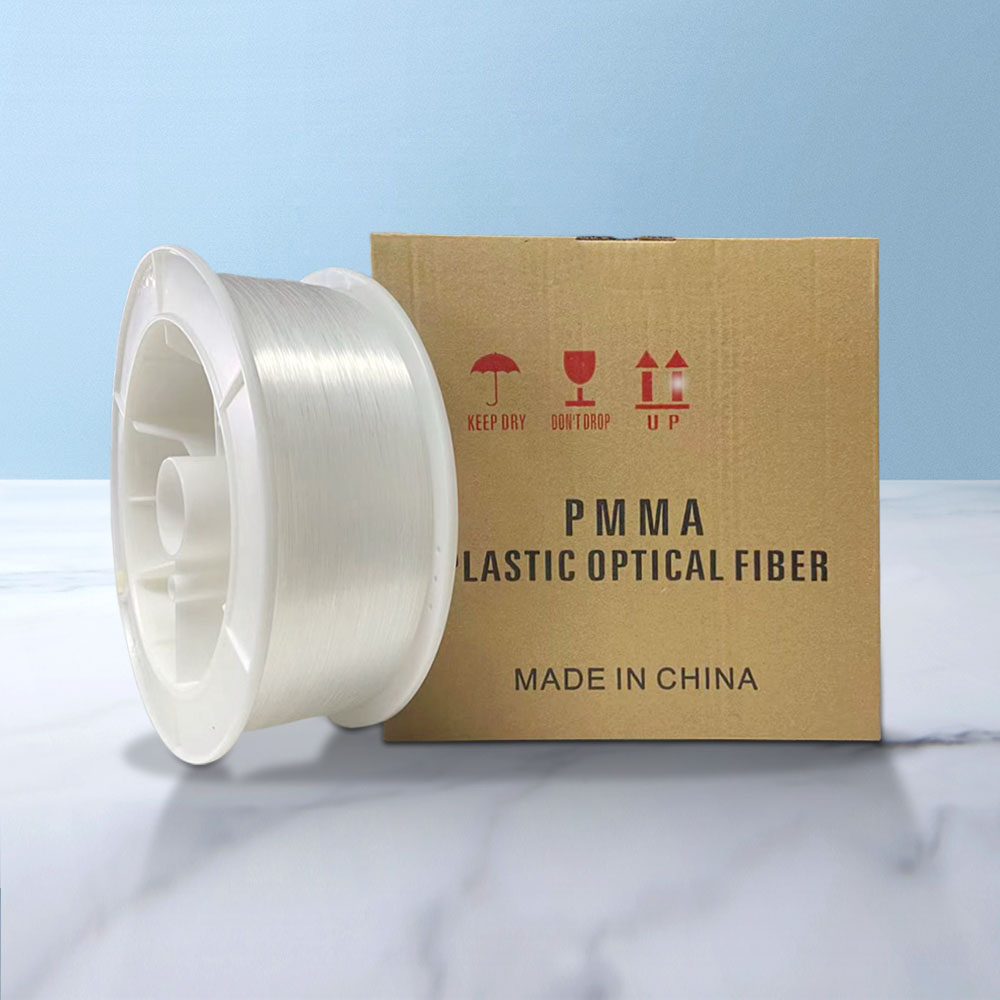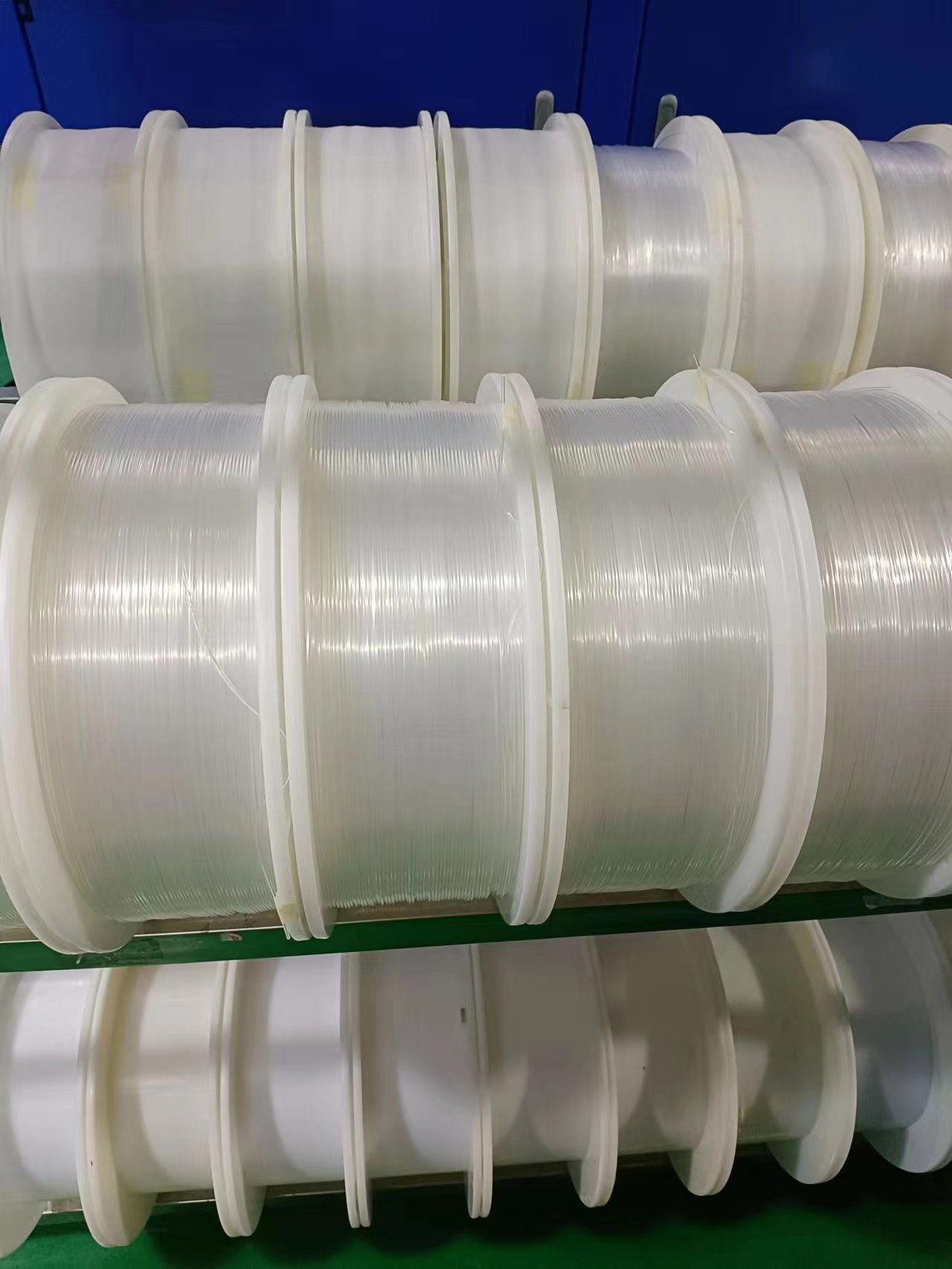Ultra-flexible PMMA plastic optical fiber production process, what are the commonly used raw materials?
Ultra-flexible PMMA plastic optical fiber has become a popular choice for short-distance communication and industrial control, with the advantages of high transmittance, toughness and low cost. This article analyzes the manufacturing secrets and technical highlights of this optical fiber from two dimensions: core raw materials and production process.

Monomer purification: Methyl methacrylate (MMA) monomer is distilled under reduced pressure to remove impurities, and the purity must reach more than 99.9%;
Add initiator: Add peroxide (such as benzoyl peroxide) or azo initiator to control the polymerization reaction rate;
Functional additive mixing: Add chain transfer agent (such as dodecyl mercaptan) to adjust the molecular weight distribution and improve the uniformity of the material.
High temperature polymerization: Mix the MMA monomer with the initiator, put it in a closed container and heat it to 80-120℃, and continue the reaction for 6-12 hours to form the polymer PMMA;
Nitrogen protection: Nitrogen is introduced throughout the process to prevent the material from turning yellow due to oxidation.
Melt extrusion: heat the polymerized PMMA raw material to **220-250℃** to melt, and form a preform rod through a screw extruder;
Clad synchronous molding: coat the fluorinated polymer (such as polyvinylidene fluoride PVDF) on the surface of the core material to form a core-cladding structure with different refractive indices.
Interface gel method: use gradient temperature field control to form a parabolic refractive index distribution inside the core material to increase the fiber bandwidth (up to Gbps)·km);
Mixed modification: add styrene or fluorinated monomers to optimize the optical properties of the material.
Cooling and shaping: quickly cool to below 50℃ through a water cooling tank to stabilize the fiber structure;
Cutting and polishing: cut into standard lengths (such as 1km/roll) with a diamond tool, and polish the surface to reduce scattering losses;
Performance testing: detect attenuation rate (150-200dB/km), bending radius (≤5mm), and key indicators such as temperature resistance (-40℃~85℃).

High-transmittance PMMA: Polymethyl methacrylate is synthesized by bulk polymerization, with a transmittance of ≥92% (wavelength 360-780nm), and a molecular weight controlled between 100,000 and 150,000;
Modification and upgrading: Titanium-based PMMA developed by the Institute of Physics and Chemistry of the Chinese Academy of Sciences can reduce the attenuation rate to below 50dB/km and expand the working wavelength to the near-infrared band.
Fluorinated polymer: Commonly used polyperfluoroethylene (FEP) or polyvinylidene fluoride (PVDF), the refractive index is 0.02-0.05 lower than the core material, ensuring full reflection conditions;
Optimize weather resistance: Add UV absorbers such as benzotriazole to increase outdoor service life.
Plasticizers: phthalate compounds, improve the flexibility of optical fiber (bending fatigue life)> 100,000 times);
Antioxidants: block phenolic compounds (such as Irganox) 1010) to prevent the material from degrading during high-temperature processing.

Massive production: The Institute of Physics and Chemistry of the Chinese Academy of Sciences has built a fully automatic assembly line, with a daily output of 100,000 meters of ultra-flexible PMMA optical fiber, and the attenuation rate is stable at 170-200dB/km, reaching the international advanced level;
Process innovation: The single-molecule diffusion purification technology is used to increase the monomer impurity content by <1ppm and increase the optical fiber transmittance by 15%;
Application expansion: Ultra-fine optical fiber with a diameter of 0.3mm has been used in medical endoscopes and is resistant to high-temperature and high-pressure sterilization (135℃/30 minutes).
Conclusion: "Flexible weapon" for short-distance communication
Ultra-flexible PMMA plastic optical fiber uses PMMA core material + fluorinated cladding as the core structure, and is mass-produced through bulk polymerization, extrusion, drawing, gradient adjustment and other processes. Its anti-bending and easy installation characteristics are irreplaceable in the fields of smart home wiring, automotive CAN bus, industrial robots, etc. With the breakthrough of material modification technology, this optical fiber is expected to open up a larger market in emerging fields such as flexible electronics and wearable devices.
CopyRight © Senwo technology . All Rights Reserved TEL:+86-717-4828268 网站地图